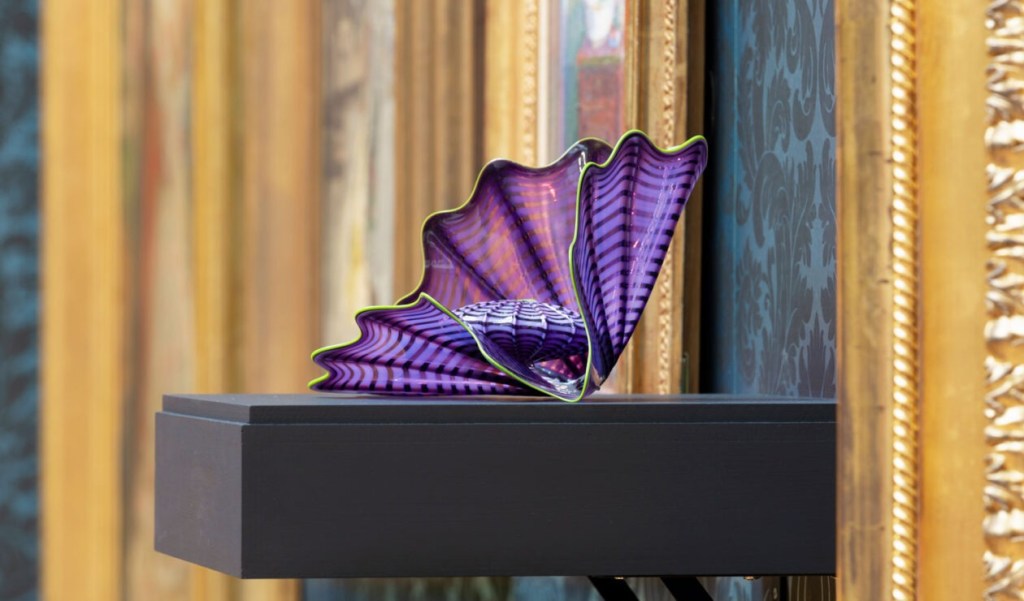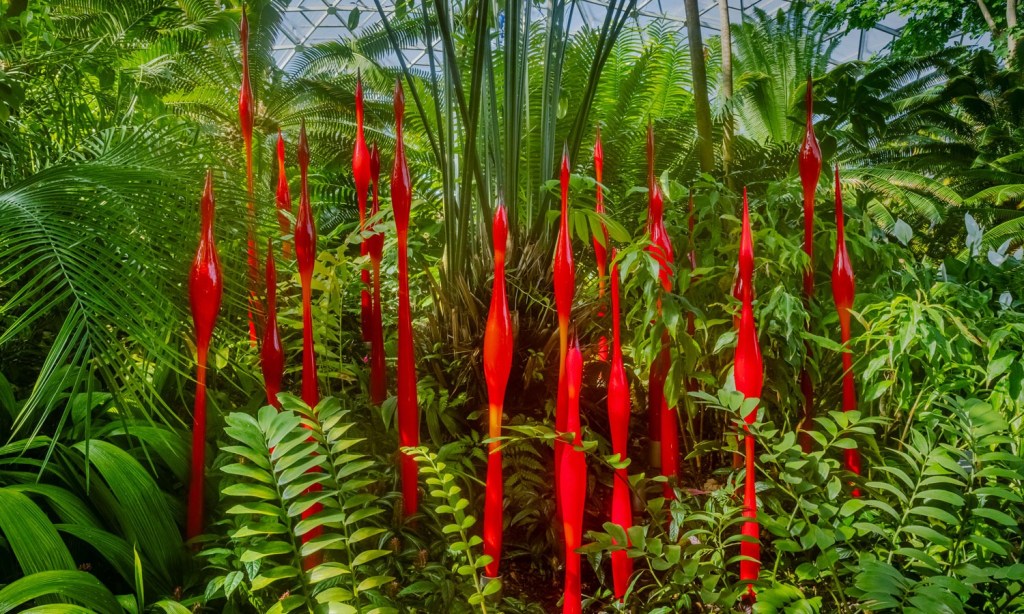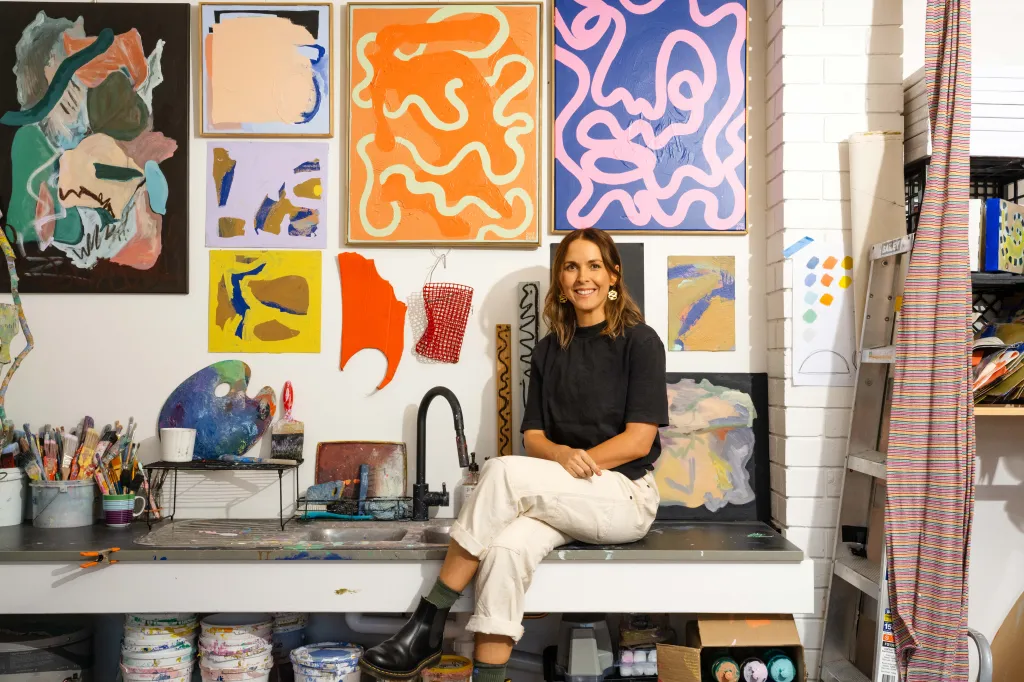In full bloom: Chihuly’s striking Imperial iris
While a series of large glass-art sculptures by Dale Chihuly will soon draw thousands of visitors to the Adelaide Botanic Garden, a much smaller yet equally striking work by the artist is turning heads in the Art Gallery of South Australia.

Imperial iris Persian pair is a sculpture by glass artist Dale Chihuly (b. 1941). Made in two parts, the work is the artist’s interpretation of the imperial iris flower in full bloom in glass.
A striking violet colour with a chartreuse trim, it comprises an outer scalloped and pleated form with a circular disc sitting within. The overall effect emulates the floral form of the work’s namesake.
Chihuly is arguably the most celebrated glass artist working today. He was an early adopter of the studio glass movement of the 1960s which influenced hot-glass production in workshops around the world, and he has continued to be prolific in his output.

Dale Chihuly, Imperial iris Persian pair, 1999, Seattle, glass, 18.5 x 33.0 x 28.0 cm; gift of Rosemary, John and Marjorie Ferguson 2001, AGSA. © Dale Chihuly
Chihuly grew up in a working-class family in Washington State in the United States. In 1962 he travelled to Europe, where, like many others before him, he admired the medieval churches with their stained-glass windows.
Back in the US, four years later, Chihuly enrolled at the University of Wisconsin where he studied under Professor Harvey Littleton (1922–2013), a pioneer of the studio glass movement.
The studio glass movement dramatically altered the way in which artists and art students engaged with the material. Previously, students had drawn designs on paper, with these subsequently translated into glass by makers in industrial workshops. Using studio glass methodology, students were taught both design and hot glass techniques.
From his early years of making, Chihuly chose to work collaboratively, developing a communal model of glass blowing that he went on to teach at the Pilchuck Glass School which he helped to establish in 1971.The Pilchuck Glass School continues to be influential with artists visiting from all around the world, including South Australian glass artists Clare Belfrage and Liam Fleming.
Adelaide also has a rich history of studio glass production, with JamFactory’s studio having been set up by Chihuly’s contemporary Sam Herman in 1974 as part of then-premier Don Dunstan’s plan to make South Australia a hub for contemporary craft.
Subscribe for updates

Installation view: Imperial iris Persian pair by Dale Chihuly, Art Gallery of SA. Photo: Saul Steed
Chihuly’s Imperial iris Persian pair is part of a larger body of work that was displayed at JamFactory when Chihuly last exhibited in Australia in 2000. The work is currently on display in Gallery 15, a space that explores pathos, or emotional connection. Imperial iris Persian pair evokes a sense of awe from the beauty and complexity of nature, and here it sits surrounded by paintings that celebrate love, family, friendship and the beauty to be experienced in quiet moments of reflection.
Ingrid Goetz is the Vernon-Roberts assistant curator of Decorative Arts & Design at the Art Gallery of South Australia. This article is part of InReview’s Off the Wall series, in which AGSA curators offer an insight into specific works or displays at the gallery.
Chihuly in the Botanic Garden is opening at the Botanic Gardens (with associated exhibitions at JamFactory) on September 27. Read John Neylon’s recent feature about Chihuly and the upcoming display here on InReview.

